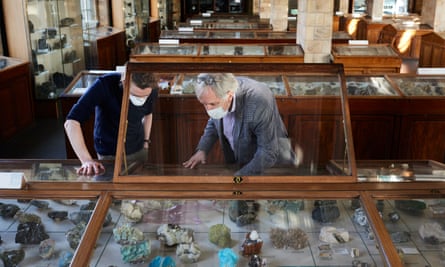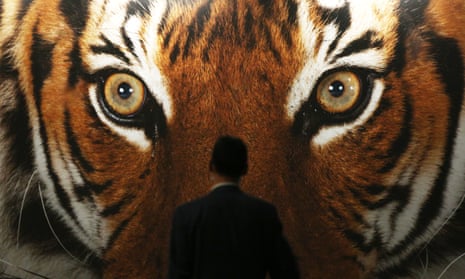Bats sweltering in their boxes, polar bears and narwhals using up to four times as much energy to survive, birds starving as Turkey’s lakes dry up, and unique island species at high risk of extinction as the planet warms. If there was ever any doubt about the inextricable link between the climate emergency and the biodiversity crisis, those doubts were well and truly dispelled in 2021.
“The science is clear: climate, biodiversity and human health are fully interdependent,” Frans Timmermans, the European Commission vice-president who heads the European Green Deal; Achim Steiner, of the UN Development Programme; and Sandrine Dixson-Declève, of the Club of Rome, wrote before the Cop26 climate conference.
While the much-anticipated Cop15 Kunming biodiversity conference was delayed yet again, Cop26 brought together leaders from across the globe to discuss the climate emergency. Although the pledges on emissions cuts fell short of those required to limit the increase in temperatures to 1.5C, there were promises to halt and reverse global deforestation over the next decade.
Meanwhile, dozens of countries have committed to protecting 30% of the planet’s land and oceans by 2030, and in September, nine philanthropic foundations pledged $5bn (£3.75bn) to finance the 30x30 pledge.
Despite the coronavirus pandemic and the many lockdowns, 2021 saw the world’s scientists, volunteers and conservationists continuing their efforts to protect nature. The International Union for Conservation of Nature launched its new green list of protected and conserved areas, researchers at the Natural History Museum worked on digitising its vast collection, Kenya held its first animal census, and a multimillion-pound project was launched that aims to describe and identify the web of life in large freshwater ecosystems with “game-changing” DNA technology.
In September, the IUCN world conservation congress in Marseille brought together innovators and policymakers from across the world for talks and debates on subjects as diverse as the universal declaration of the rights of the river, alien species, human-wildlife conflict, the use of smart technology in conservation, genetic engineering and much more.

Not all conservation efforts are down to scientists and policymakers though. There is growing recognition of the vital role communities and indigenous people play in conserving biodiversity and building livelihoods and this year we highlighted projects that included a shade-grown coffee initiative in Peru, islanders rallying to save the coco de mer nut in Seychelles and an army of nature recorders and seed conservers in the UK.
There was good news elsewhere. The flatpack homes for animals that fall victim to wildfires that we highlighted in April have since been trialled in Sydney, where a “housing estate” of the biodegradable cardboard pods has been put up to give shelter to wildlife after the bushfires.
In response to our piece on conservationists criticising Marks & Spencer for releasing 30 million honeybees, the British retailer filled 500 stores with little signs telling shoppers about the importance of native bumblebees in producing a number of foods. M&S has been “really open to learning”, said Gill Perkins, chief executive of the Bumblebee Conservation Trust, who believes it is the first UK supermarket to introduce bumblebee labels highlighting the work of these pollinators. She hopes others will follow suit.
Andrew Kerr, who spoke to the Guardian about wanting to create a UK eel rewilding programme, is having discussions with the relevant government ministry in January about the feasibility of getting rewilding permits sorted for this coming eel season.
Since we reported on the proposals to extend Barcelona airport, threatening neighbouring wetlands and a wealth of biodiversity, the plans have been put on hold. The future of the red wolf in North Carolina still hangs in the balance but the US Fish and Wildlife Service says it is planning to release nine wolves from captivity this winter. And an experimental feeding programme has been approved for Florida’s manatees, after a record year of deaths.
Over the coming weeks, we will follow up on some of the stories that we covered during 2021 in more depth, but in the meantime, you might like to take a look at some of our favourite articles from the year that celebrate the planet’s beautiful and intricate biodiversity: why we need to stop treating soil like dirt; the wonderful world of fungi; the value of dead wood; how a wild night out could help you reconnect with nature; and, lastly, a lesson in why some things are worth waiting for, especially when they turn out like this …
Find more age of extinction coverage here, and follow biodiversity reporters Phoebe Weston and Patrick Greenfield on Twitter for all the latest news and features
